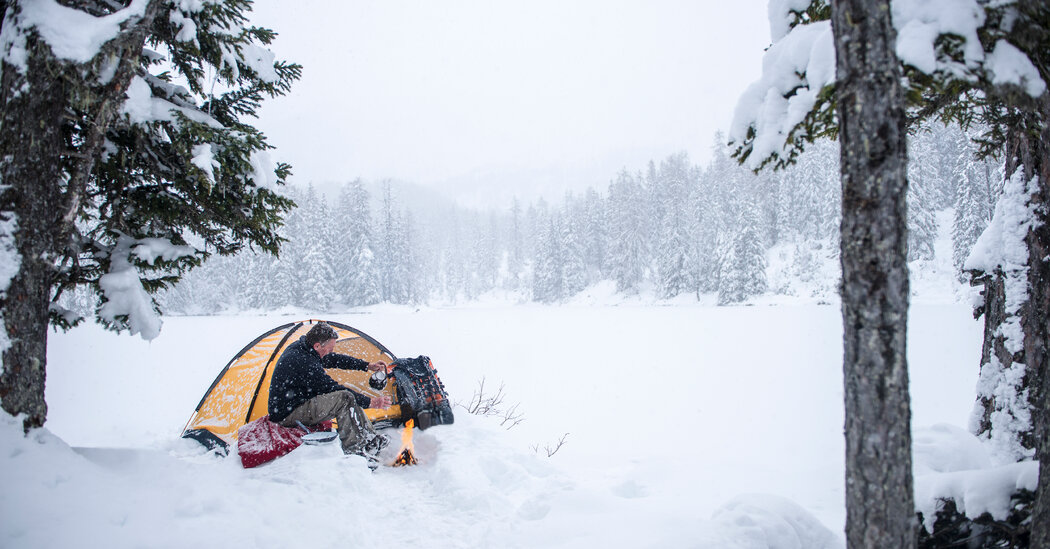
“If people know they have the opportunity to get warm, they’ll enjoy the cold a lot more,” said Joe Meyer, who with his wife, Mollie Foster, runs Traverse Alaska, a Denali Park, Alaska-based outdoor adventure company. “It goes from, ‘I’m miserable,’ to ‘I’m going to stay outside and enjoy the Northern Lights a bit longer, even though it’s 20 below zero.’”
To get started
No matter your level of camping expertise, signing up for winter-specific classes or instruction is a wise first step. Courses offered through the ADK Winter Mountaineering School, the Sierra Club and other wilderness organizations often combine classroom time, learning about compass and map navigation, what to pack and safety skills, with trips of varying lengths on the ground to test out what you’ve learned in the elements. (Avalanche safety courses are highly recommended should you want to level up your winter camping game).
You can ease into the elements, too.
“Try camping in your own backyard to start,” said Alysa Arnold, a stay-at-home mother and entrepreneur who splits her time between Concord, Mass., and Saratoga Springs, N.Y. and is the assistant director of the ADK Winter Mountaineering School. “I’ll do that with my kids, and if it doesn’t work, we can just go back inside.”
Guided trips like those led by Mr. Meyer and Ms. Foster in Alaska, are excellent resources for those who want to explore farther afield and don’t want to go it alone. Additional trips can be found just about anywhere you’re interested in winter camping, including Utah, Colorado, Oregon, Vermont, Canada, Svalbard and more.
Many organizations, including the Winter Mountaineering School and the Sierra Club offer resources online, not only for best practices, but also suggestions for the appropriate gear, including clothing and cookstoves.
“People think the cold is your enemy, but it’s not. The wet is your enemy,” said Mr. Eis, referring to a common pitfall of layering too much when snowshoeing, hiking or skiing, which leads to sweating. Wearing moisture-wicking, quick-drying materials, including synthetics, wool and fleece, is key, as is avoiding cotton.
A sleeping bag appropriate for cold weather is a must, as is a lightweight camp stove, fuel (the Sierra Club recommends white gas for winter camping) and camping cookware to melt snow for water and make hot food and drinks. A backup firestarter, like a lighter or waterproof matches, is also a requirement. Depending on your trip, snowshoes, skis, axes or crampons might be needed. Retailers like Eastern Mountain Sports, Sports Basement and R.E.I. rent hiking and camping equipment, from apparel to tents.





